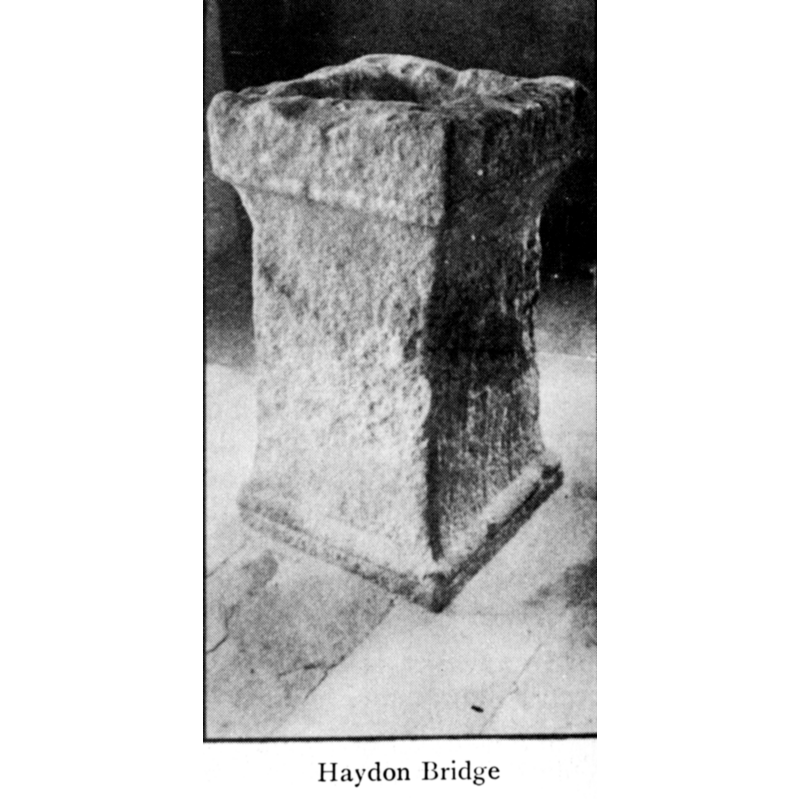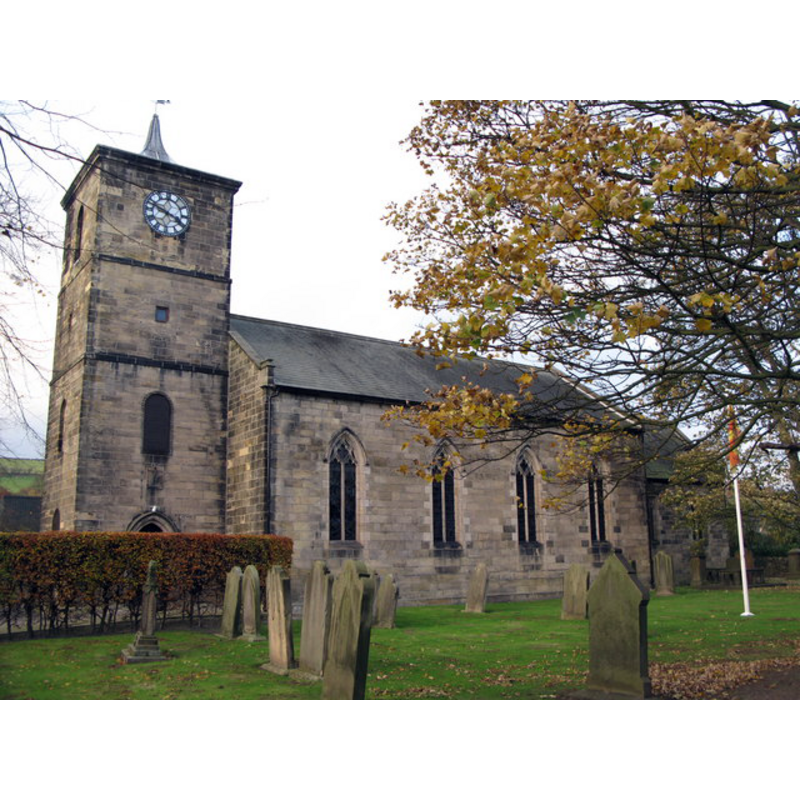Haydon Bridge

Image copyright © [in the public domain]
PD
Results: 2 records
view of church exterior - south view
INFORMATION
FontID: 01143HAY
Object Type: Baptismal Font1
Church/Chapel: Parish Church of St. Cuthbert [originally from the old chapel nearby]
Church Patron Saints: St. Cuthbert [aka Cubertus]
Church Location: Haydon, Northumberland NE47 6LL
Country Name: England
Location: Northumberland, North East
Directions to Site: Located on the B6319, 14 km W of Hexham, 45 km W of Newcastle upon Tyne, (dir. Carlisle)
Ecclesiastic Region: Diocese of Newcastle [formerly Durham?]
Font Location in Church: Inside the church
Century and Period: 3th - 5th century [converted Roman altar], Anglo-Roman
Workshop/Group/Artisan: altar font
Cognate Fonts: The fonts at Chollerton and St. John Lee (Northumberland) are also hollowed out Roman altars, as is the one at Staunton
Church Notes: formerly a parochial chapelry -- "This chapel was built in 1797, in lieu of the old one, which is situated about 1 mile N. of the village, and is used at times for interments" [source: National Gazetteer (1868)]
Font Notes:
Click to view
Ruprich-Robert (1855) mentions a noteworthy font at Haydon without further details. Romilly Allen (1888) includes Haydon's among a number of "fonts made out of Roman altars". Bond (1908) mentions three examples of "Roman altars [...] converted into fonts": this one, the font at Chollerton Bridge and another one at St. John Lee, all in Northumberland. Cox & Harvey (1907) describe it as a baptismal font believed to be a hollowed out Roman altar. Tyrrell-Green (1928) identifies it as a "Roman altar, from the ruins of Borcovicium, converted in like manner for the administration of the Christian sacrament." The modern, 19th-century, font is made of marble.
COORDINATES
Church Latitude & Longitude Decimal: 54.973963, -2.246799
Church Latitude & Longitude DMS: 54° 58′ 26.27″ N, 2° 14′ 48.47″ W
UTM: 30U 548212 6092154
MEDIUM AND MEASUREMENTS
Material: stone, type unknown
Number of Pieces: one
Font Shape: square (mounted)
Basin Interior Shape: round
Basin Exterior Shape: square
INSCRIPTION
Inscription Language: Latin
Inscription Notes: the pagan inscription had been chiselled off when the Roman altar was converted to use as font
Inscription Location: it was on the side
Inscription Text: [chiselled off]
Inscription Source: Bond (Ibid., p. 99)
REFERENCES
Allen, J. Romilly, "On the Antiquity of Fonts in Great Britain", XLIV, Journal of the British Archaeological Association, 1888, pp. 164-173; p. 172-173
Betjeman, John, An American's Guide to English Parish Churches (including the Isle of Man), New York: McDowell, Obolensky, 1958
Bond, Francis, Fonts and Font Covers, London: Waterstone, 1985 c1908
Cox, John Charles, English Church Furniture, New York: E.P. Dutton & Co., 1907
Ruprich-Robert, V., "Bénitiers et fonts baptismaux du Moyen-âge et de la Renaissance", II (1855), Revue générale de l'architecture et des travaux publics, pp. 289-290, Pl. XXVI; p. 289
Stocker, D.A., "Fons et origo: The Symbolic Death and Resurrection of English Font Stones", I (1997b), Church Archaeology, 1997, pp. 17-25; p. 25
Tyrrell-Green, E., Baptismal Fonts Classified and Illustrated, London: Society for Promoting Christian Knowledge: The Macmillan Co., 1928
